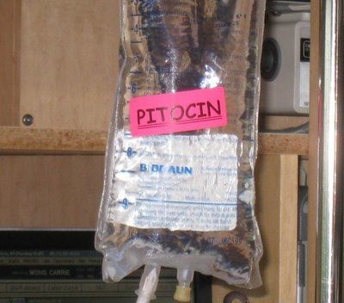Schedule a Consultation
216-621-3000Schedule a Consultation
216-621-3000
In order to move the pregnancy along, doctors will use drugs to begin (induce) labor in non-laboring patients, or will increase (augment) contractions in laboring patients. These drugs, including Pitocin, Oxytocin and Cytotec (misoprostol), have the capacity to cause great changes in the body, and can be extremely dangerous to an unborn child.
Inducing Labor
Labor can be started in many different ways, including medications containing prostaglandins (like Cytotec or misoprostol), oxytocic drugs (like Pitocin or Oxytocin), artificial rupture of membranes (AROM) or mechanical dilation of the cervix.
Labor is induced for many reasons, including posterm pregnancy, preeclampsia, nonreassuring fetal status, premature rupture of membranes (PROM) or intrauterine growth restriction (IUGR).
Doctors often consider the Bishop score to help decide whether induction is likely to be successful. The Bishop score is a method of measuring the cervical status, and takes into consideration the following:
Patients with a score of 9 or higher will typically induce naturally; patients with a score below 5 may require induction.
Augmentation of Labor
Labor is often augmented when a woman’s contractions are inadequate or the labor is proceeding for too long. The strength of contractions can be measured using a device called an intrauterine pressure catheter.
Doctors should be careful when administering Oxytocin, Pitocin, and Cytotec. The prostaglandins are often contraindicated for mothers with asthma, glaucoma, more than one prior cesarean section and nonreassuring fetal tracings.
Oxytocin and Pitocin are typically provided intravenously, and doctors should slowly increase the dosing, all the while observing the effects on the mother’s contractions and the baby’s (through electronic fetal monitoring). If too much drug is used, there is a risk of uterine hyperstimulation, which describes out-of-control contractions that can severely restriction oxygen and blood flow to the baby. Uterine hyperstimulation can also lead to uterine rupture. At the first signs of uterine hyperstimulation, the drug levels should be dialed back.
Cytotec and misoprostol were originally created to treat ulcers, but have since become widely used to help ripen the cervix. They are given in tablet form, often directly into the vagina. The drug’s manufacturer cautions against its use in pregnancy, noting that it may cause uterine rupture, uterine hyperstimulation, or death. Regardless, the American College of Obstetricians and Gynecologists supports its use in labor and delivery.
If you or your child was injured during the induction or augmentation of labor, contact our medical malpractice lawyers at (440) 252-4399 or online. We have the experience to determine whether drugs were incorrectly used during your labor, and whether those drugs caused your baby’s birth injuries, including cerebral palsy.

